
Yacare caiman (Caiman yacare), Pantanal, Brazil.
Crocodiles part 6: Common Caimans
Six species of caimans inhabit the Latin America. Three of them belong to genus Caiman, and are common in a wide variety of habitats, from rainforest rivers to small savanna ponds.
 |
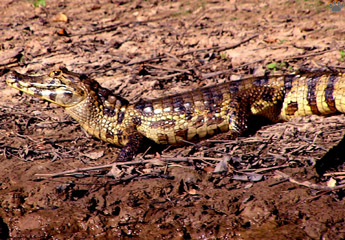 |
| Yacare caimans, Rio Yacuma, Bolivia. |
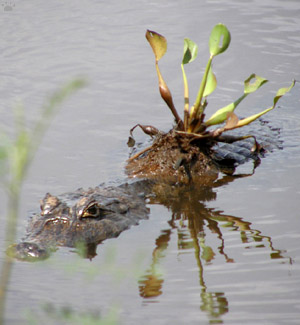
Yacares are real experts in the art of camouflage. Pantanal, Brazil. |
Yacare caiman has the smallest range of all, but it's probably the most numerous caiman. It lives from Bolivia to northern Argentina, with very large populations in the Pantanal and eastern Bolivia. |

This caiman carried a water hyacinth on its back for at least a week. |
 |
 |
 |
| Yacare caimans, Noel Kempff Mercado National Park, Bolivia. |
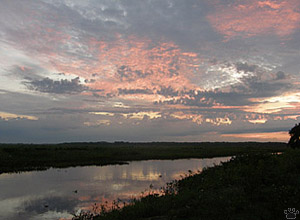
Yacare country, Pantanal, Brazil. |
It is most abundant in savanna lakes, but inhabits also forested rivers and marshes. It can survive a drought by aestivating in wet mud. |
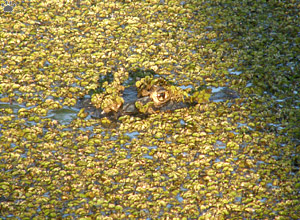
Yacare caiman hiding in a shallow pond. Pantanal, Brazil. |
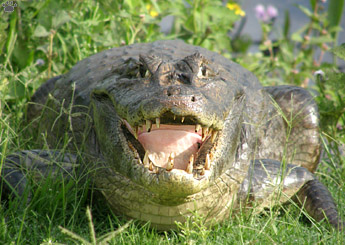
Yacare caiman in threatening posture, Pantanal, Brazil. |
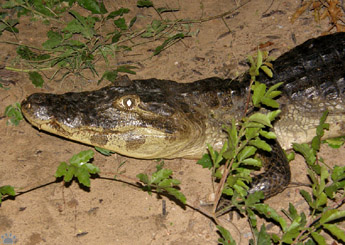
Yacare caiman on a midnight stroll, Pantanal, Brazil. |
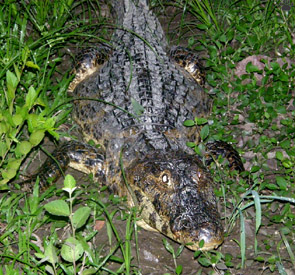
Yacare caiman hunting on land at night. NKMNP, Bolivia. |
A versatile hunter, it uses many techniques, from nighttime trailside ambushes to active patrolling. It eats anything from insects and snails to carrion and small mammals, but mostly fish. |
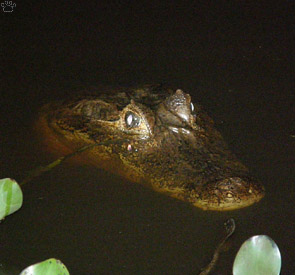
Female in a breeding pool, Pantanal, Brazil. |
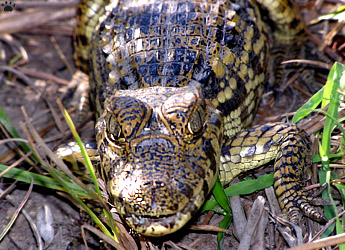 |
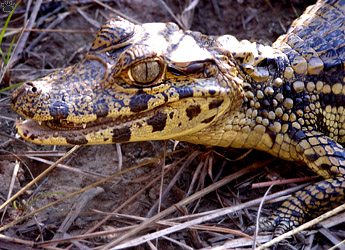 |
| Baby yacare caiman, Rio Beni Biosphere Reserve, Bolivia. |
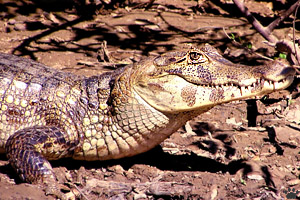
Yacare caiman, Rio Yacuma, Bolivia. |
Yacare caimans have dark spots on the sides of their jaw. These spots can be used to recognize individual animals. |
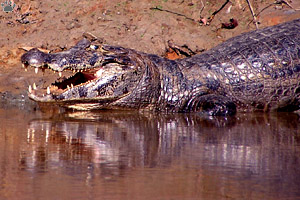
Yacare caiman, Madidi National Park, Bolivia. |
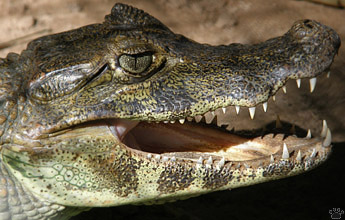 |
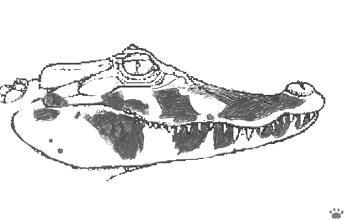 |
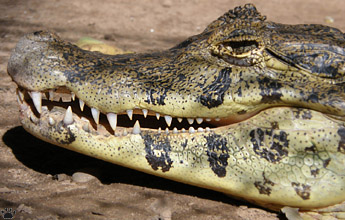 |
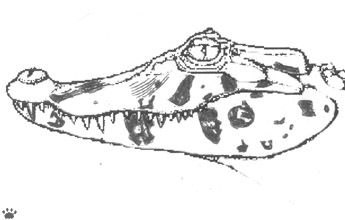 |
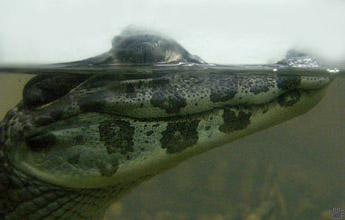 |
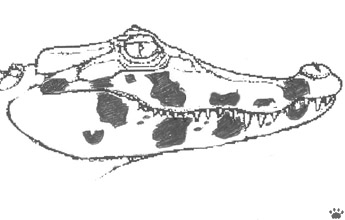 |
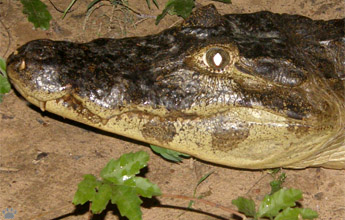 |
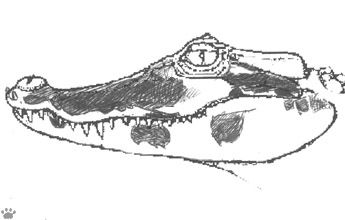 |
| Yacare portraits and corresponding identification cards from my research. Pantanal, Brazil. |
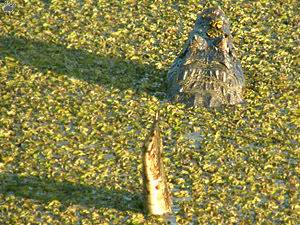 |
Yacare courtship is fascinating to watch. In spring (late dry season), hundreds gather in remaining ponds to mate. |
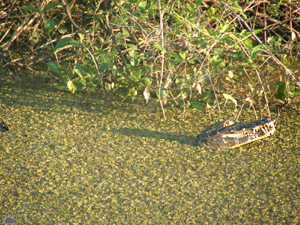 |
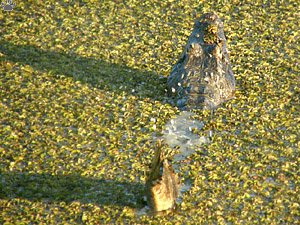
Yacare caiman roaring, Pantanal, Brazil. Note the "water dance" effect. |
Males perform roaring displays from late afternoon till late morning, each bark-like roar followed by a powerful infrasound pulse. |
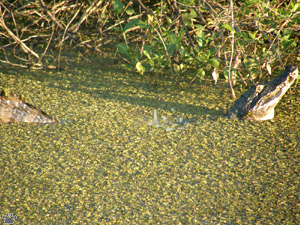
Yacare caiman roaring, Pantanal, Brazil. |

Yacare courtship is seldom a one-to-one affair. Pantanal, Brazil. |
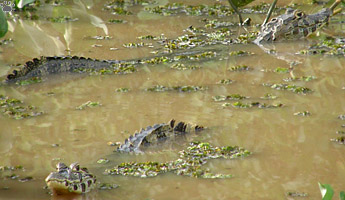
Yacares in arched-back displays, Pantanal, Brazil. |
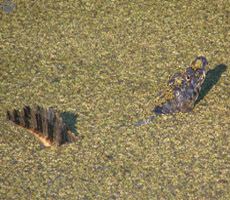
Male yacare about to head-slap, Pantanal, Brazil. |
There is also plenty of head-slapping, tail-wagging, hissing, snapping, chasing and fighting.

Yacare floating in inflated posture, NKMNP, Bolivia. Eventually, the rains come, and caimans disperse to individual territories, where females nest. |
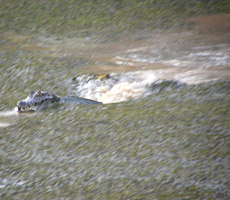
Yacare chasing a rival, Pantanal, Brazil. |
 |
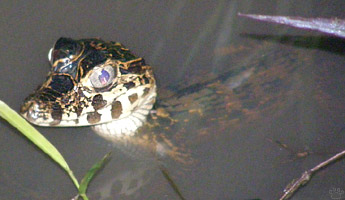 |
| Baby yacare caimans, NKMNP, Bolivia. |
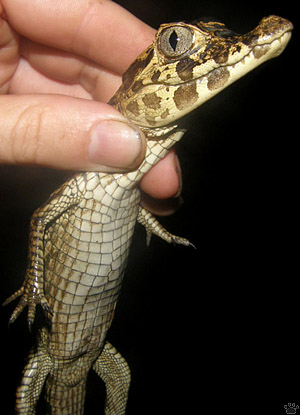
Baby yacare caiman, NKMNP, Bolivia. |
Yacare is a fast breeder. Females often take care of the young for only a short period of time, or none at all. Some would adopt other females' hatchlings. |
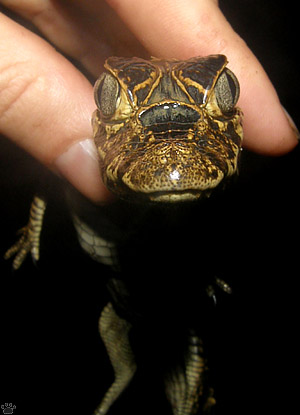
Baby yacare caiman, NKMNP, Bolivia. |
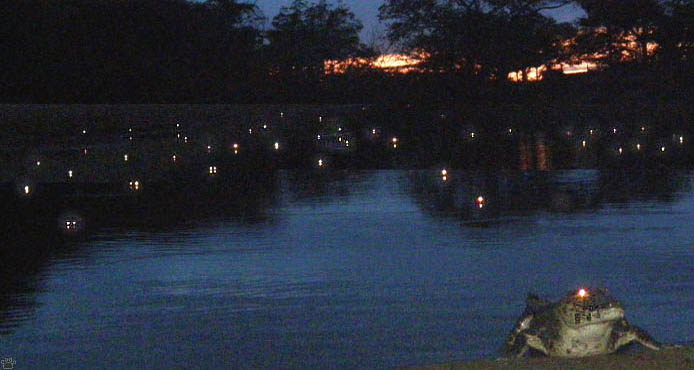
Yacare caimans, Pantanal, Brazil. |
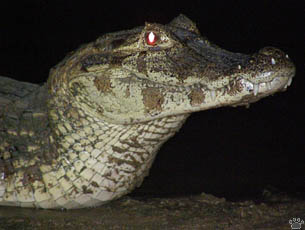
Yacare caiman, Pantanal, Brazil. |
Yacare is hunted throughout most of its range, and there are also caiman farming and ranching programs. |

Yacare caimans, Pantanal, Brazil. |
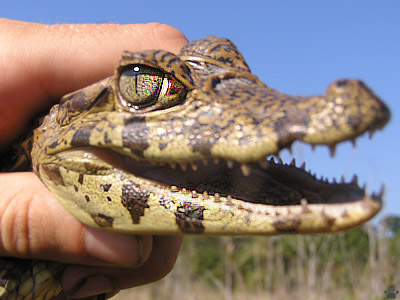
Juvenile yacare caiman, RBBR, Bolivia. |
Part 7: Common caimans (continued)
Back to Part 5
Home
|